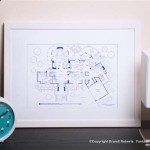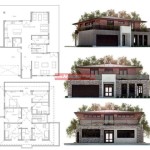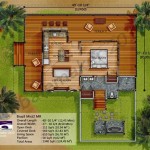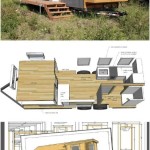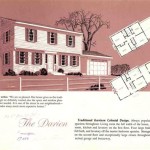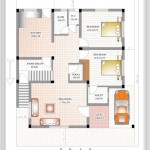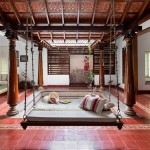Simple Log Cabin Home Plans: A Guide to Rustic Living
Log cabins evoke images of cozy retreats nestled in nature, offering a rustic charm and a connection to the outdoors. For those seeking a simpler life, a log cabin home can be the perfect choice. This article explores simple log cabin home plans, highlighting key considerations and design elements for aspiring cabin owners.
Size and Layout Considerations
One of the first decisions when planning a log cabin is determining the desired size and layout. Smaller cabins, often referred to as "tiny homes" or "cabins," offer a minimalist approach with maximized space efficiency. These designs often prioritize functionality and affordability. Larger cabins provide more room for families or those who desire additional living space, guest rooms, or dedicated work areas.
Layout considerations include the number of bedrooms, bathrooms, and the arrangement of living areas. Open-concept designs create a spacious feel and encourage interaction, while separate rooms offer privacy and defined spaces for various activities. Careful consideration of lifestyle and future needs is crucial in selecting the optimal layout.
Material Selection: Logs and More
The defining feature of a log cabin is, of course, the logs. Different types of wood offer varying aesthetics and durability. Cedar, pine, and spruce are popular choices for their appearance and structural properties. Engineered logs, crafted from laminated timber, offer increased stability and resistance to settling.
Beyond the logs, selecting appropriate materials for roofing, flooring, and windows is essential. Metal roofs offer longevity and fire resistance, while asphalt shingles provide a more traditional look. Durable flooring options, such as hardwood or tile, can withstand heavy use. Energy-efficient windows contribute to climate control and reduce energy costs.
Foundation Options for Log Cabins
A solid foundation is crucial for the stability and longevity of a log cabin. Several foundation options are available, each with its advantages and considerations. A concrete slab provides a level base and is suitable for various terrains. Basement foundations offer additional storage space and can accommodate utilities. Raised foundations, such as pier and beam or crawl space, can provide protection against moisture and pests, particularly in areas with high water tables or uneven terrain.
Roof Styles and Design
The roof of a log cabin not only protects the structure from the elements but also contributes significantly to its aesthetic appeal. Gable roofs, characterized by their triangular shape, are a classic choice, offering simplicity and efficient drainage. Hip roofs, with slopes on all four sides, provide added stability in windy areas. Dormer windows can be incorporated into the roof design to add natural light and enhance the visual appeal of the cabin.
Planning for Utilities and Services
Careful planning for utilities and services is essential during the design phase. Consider the location of plumbing, electrical wiring, and heating systems. Options for heating include wood-burning stoves, fireplaces, and conventional HVAC systems. If the cabin is located off-grid, alternative energy sources such as solar panels or wind turbines may be necessary. Access to water and sewage systems should also be addressed, whether through connection to municipal services or independent systems like wells and septic tanks.
Budgeting and Cost Considerations
Building a log cabin involves various costs, including materials, labor, permits, and land acquisition (if applicable). Developing a realistic budget is essential before embarking on the project. The size of the cabin, the complexity of the design, and the chosen materials will significantly influence the overall cost. Researching local building codes and obtaining accurate estimates from contractors will help to ensure a manageable budget.
Incorporating Outdoor Living Spaces
Log cabins often provide a close connection to nature, and incorporating outdoor living spaces can enhance this aspect. Decks, porches, and patios offer areas for relaxation, entertaining, and enjoying the surrounding scenery. Consider features such as fire pits, outdoor kitchens, or hot tubs to create a comfortable and inviting outdoor environment. Landscaping can further enhance the natural beauty of the setting, creating a harmonious blend between the cabin and its surroundings.
Maintenance and Upkeep of Log Cabins
Log cabins require regular maintenance to ensure their longevity and preserve their aesthetic appeal. Protecting the logs from moisture, insects, and UV damage is paramount. Regular sealing and staining can help prevent rot and decay. Inspecting the roof, gutters, and foundation for damage is crucial for preventing costly repairs. Proper ventilation can help regulate moisture levels and prevent the growth of mold and mildew. By implementing a consistent maintenance plan, cabin owners can enjoy their rustic retreat for years to come.

Pin On Home Plans

11 Free Small Cabin Plans With Printable Log Connection

Small Log Homes Kits Southland

45 Log Home Ideas Homes House Plans Cabin Floor

Small Log Cabin Plans Refreshing Rustic Retreats

Log Home Plans Floor

Log Cabin Home Floor Plans The Original Homes

Rus Log Cabin Plans Home Bc Usa

Clark Mountain 3 Bed 2 Bath 1 Story 2104 Sq Ft Appalachian Log Timber Homes Hybrid Home Flo Floor Plans Cabin Small House

Build This Cozy Cabin For Under 6000 Home Design Garden Architecture Blog


